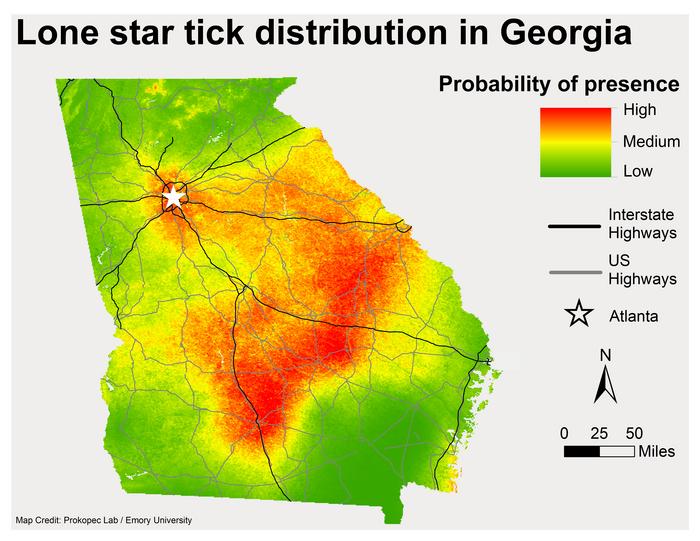What if changes in a person’s stress levels could be detected while they sleep using wearable devices? A new study by University of Vermont researchers published today in PLOS Digital Health is the first to find changes in perceived stress levels reflected in sleep data—an important step towards identifying biomarkers that may help flag individuals in need of support.
Given how critical sleep is to physical and mental health, the research team suspected signals might exist in sleep data, says Laura Bloomfield, a research assistant professor of mathematics and statistics and lead author of the study. “Changes in stress are visible.”
When parsing baseline sleep data, the researchers found “consistent associations” between people’s perceived stress scores and factors such as total sleep time, resting heart rate and heart rate variability, and respiratory rate. While it’s no surprise that most participants received less than the recommended 8 to 10 hours of sleep for young adults, the minutes do matter. For every additional hour of sleep recorded, the odds of someone reporting moderate-to-high stress decreased about 38 percent. Nightly resting heart rates offered more clues. For each additional beat per minute, the odds of experiencing stress increased by 3.6 percent.
Bloomfield is a principal investigator of the Lived Experience Measured Using Rings Study (LEMURS)—a longitudinal study started at UVM in 2022 that tracks hundreds of first- and second-year college students 24 hours a day using a wearable Oura ring biosensor and through surveys about their wellbeing. This is the first peer-reviewed paper from LEMURS and shows that data gleaned from wearables can reveal changes in people’s mental health status.
“The study showed that sleep measures from the Oura ring were predictive of participants’ perceived level of stress. If we are able to identify in real-time that someone is experiencing increased stress, there might be an opportunity to offer helpful interventions.,” Bloomfield explains. “There are a lot of ways to implement interventions, but the first step is understanding the connection between sleep measures and mental health measures.”
About LEMURS
The LEMURS project was conceived by Chris Danforth, professor of applied mathematics at UVM’s Vermont Complex Systems Center and fellow of the Gund Institute for Environment and Bloomfield, MD/Ph.D., to determine how wearable technologies could be used to improve young people’s health and well-being with personalized health feedback. LEMURS is supported by a grant from MassMutual.
College students, in general, don’t sleep enough, often feel stressed, and are at greater risk of experiencing mental health issues. The LEMURS research team will also evaluate the effectiveness of interventions such as exercise, excursions into nature, and group therapy—all interventions which have previously shown improvements in health and wellbeing—to understand which work best and how quickly scalable they are for large populations. But to do all of this requires identifying biometric data that provide the clearest signals for addressing changes in physical and mental health—a process that involves gathering and sifting through millions of hours of data each year.
LEMURS participants wear Oura rings that quietly collect measurements including temperature, heart rate, breathing rate, and nightly sleep duration as well as complete routine surveys to collect more subjective responses about potential stressors and their emotions. Location information is also used to calculate the exposure participants have to nature. All this data is then combed by LEMURS researchers like Mikaela Fudolig, research assistant professor of mathematics and statistics, who test specific relationships that could be used to develop health interventions. She co-authored the PLOS Digital Health paper and says there is power in the study’s numbers.
Initially, 600 first-year students aged 18 to 20 enrolled in LEMURS. A second cohort of first-year students was added in fall 2023 with a goal of following these individuals through college and far into the future.
“We have been tracking the same students for almost two years now, and there are very few studies that do that,” says Fudolig, research assistant professor of mathematics and statistics, who co-authored the PLOS Digital Health paper and says there is power in the study’s numbers. “We have several sources of data. Taking these all together—your ring data, your survey data, your nature-dose data, we also have blood work done—we will see a lot of different dimensions from these participants. So, combining them is, to me, the most exciting thing of it all.”
These potential predictors of stress led to a sleep analysis of LEMURS participants by Fudolig which detected two distinct heart rate curves, particularly among women. We find that those who reported an impairment in their daily life due to anxiety or depression had heart rates that dropped later in the night, she explains.
“A high burden of stress”
The COVID-19 pandemic worsened mental health problems for an already vulnerable population. In the decade before COVID, the Center for Disease Control and Prevention found the percentage of high school students nationwide experiencing persistent feelings of sadness or hopelessness jumped from 26.1 percent to 36.7 percent. The CDC’s 2021 Youth Risk Behavior Survey showed another jump—42 percent of students reported feeling persistently sad.
This is one reason Danforth and Bloomfield launched LEMURS in the first place.
“There is a high burden of stress in this population,” Bloomfield says, “College is seen as a very carefree period of time where you are coming into your own, but it’s also a period with a lot of transition and a lot of additional stressors. There needs to be better, accessible support systems for young adults during this time.
She wasn’t surprised to learn that perceived stress scores of LEMURS participants were high—64% of responses were considered moderate-to-highly stressed. These are personal assessments of how individuals feel about problems they encounter and their ability to manage them and responses vary depending on one’s life experiences, personality, support, and coping skills. Part of the challenge with interpreting stress signals using biometric data is figuring out when deviations from someone’s baseline are problematic and concerning, Bloomfield explains.
“This is a resilient population, they are young and healthy,” she continues. “But I think this study is bringing to light important issues facing this population. The ultimate goal with our research is that you can help support people in times of decreased mental health or physical health status.”
Additional UVM researchers involved in this study include Julia Kim, Jordan Llorin, Juniper Lovato, Matt Price, Taylor H. Ricketts, Peter Sheridan Dodds, Kathryn Stanton, and Christopher M. Danforth, working with Ellen McGinnis and Ryan McGinnis (Wake Forest University). This is the first peer-reviewed paper from UVM’s Lived Experience Measured Using Rings Study, a longitudinal investigation using wearable technologies to detect and incentivize positive changes in physical and mental health. The study is funded by a grant from MassMutual.
Journal
PLOS Digital Health
DOI
10.1371/journal.pdig.0000473
Method of Research
Experimental study
Subject of Research
People
Article Title
Predicting stress in first-year college students using sleep data from wearable devices
Article Publication Date
11-Apr-2024
COI Statement
none









































